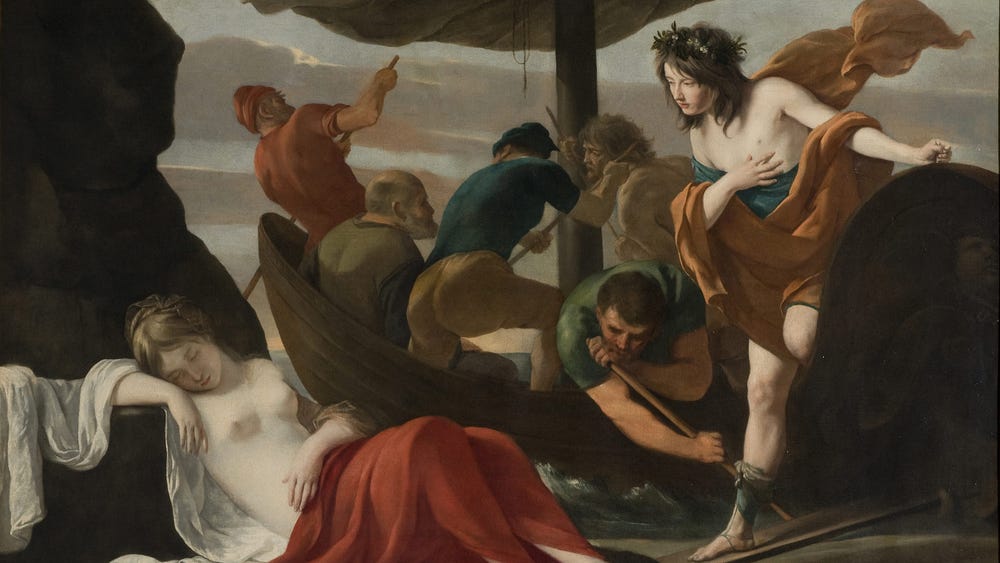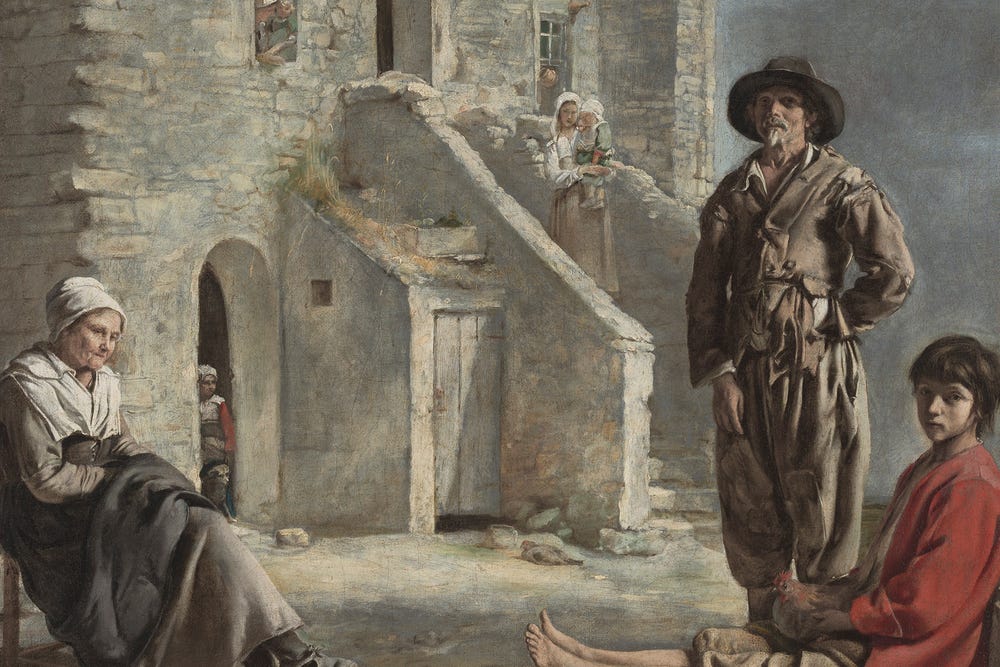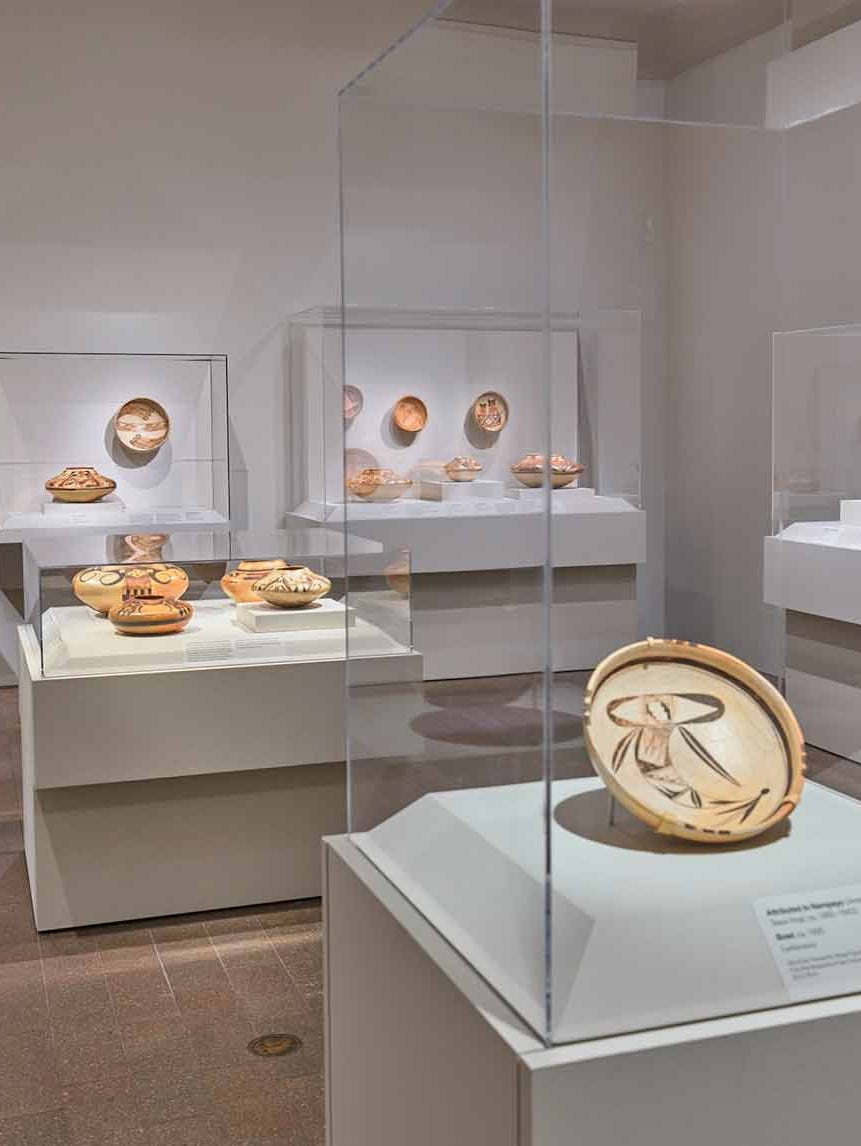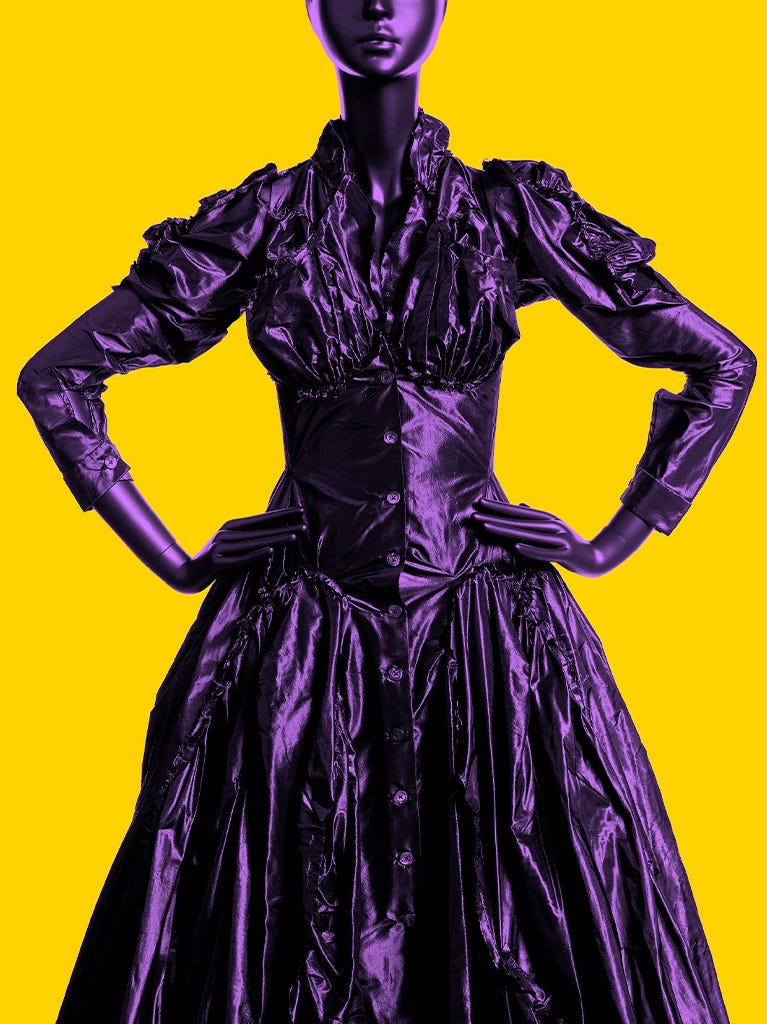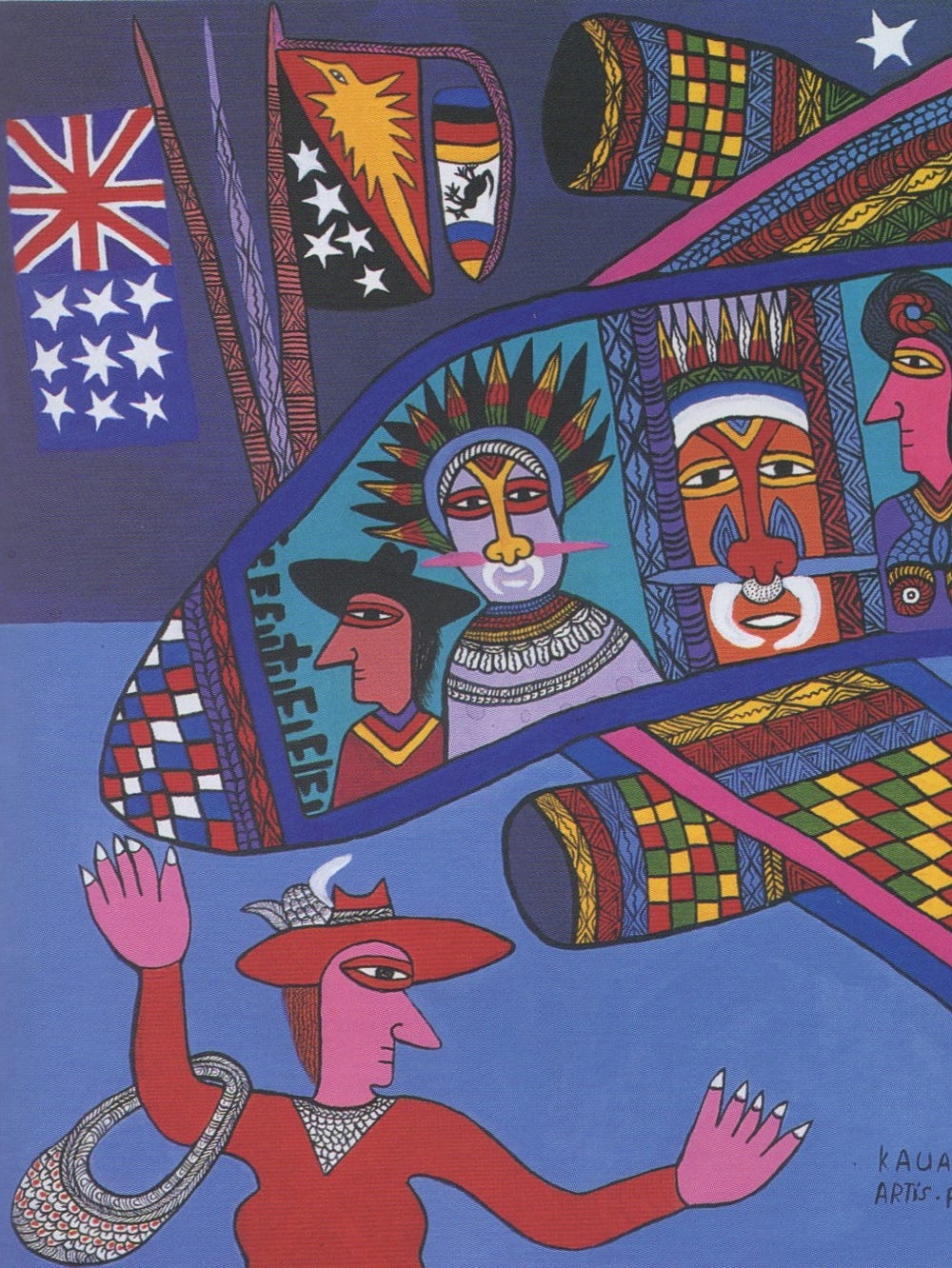Le Nain, Bacchus and Ariadne (detail), ca. 1635. Oil on canvas, 40 1/8 x 59 7/8 in. Musée des Beaux-Arts, Orléans, France, 70.4.1. Photo by Christophe Camus
The Brothers Le Nain: Painters of 17th-Century France
The Brothers Le Nain: Painters of 17th-Century France is the first major exhibition in the United States devoted to the Le Nain brothers — Antoine (ca. 1598 – 1648), Louis (ca. 1600/1605 – 1648) and Mathieu (ca. 1607 – 1677). The presentation features more than forty of the brothers’ works to highlight the Le Nains’ full artistic production, and is organized in conjunction with the Kimbell Art Museum in Fort Worth, Texas, and the Musée du Louvre-Lens in France.
Active in Paris during the 1630s and 1640s, the brothers are today best known for their startlingly realistic depictions of the poor. Painters of altarpieces, portraits and allegories, the brothers’ work was rediscovered in the 19th century by such art historians as Champfleury, and influenced many artists including Gustave Courbet and Édouard Manet. The brothers then became famous as “painters of reality,” admired for their deeply sympathetic and affecting portrayals of hard-working men and women. In these paintings, we see smiling field laborers, city beggars with deadpan expressions, mothers cradling infants with perfect intimacy, and children that dance and play music with a lack of pretension. The Museums’ Peasants before a House is one of the finest examples of this subject.
Despite their renown, many important details of the brothers’ lives and work continue to elude historians. This comprehensive presentation and its almost five-hundred-page catalogue offer new scholarship concerning the authorship, dating and meaning behind their art. As the works were not individually signed, assigning a specific painting to a specific brother has long been a matter for debate. Extensive new research has been conducted to address questions of authorship through direct comparisons of key works from the brothers’ oeuvre. Visitors will have the rare opportunity to compare these pieces side by side in the Legion of Honor’s galleries. The exhibition also includes a substantial technical study from painting conservators at the Fine Arts Museums and the Kimbell, detailing the materials and working methods of the brothers.
In their day, the brothers were celebrated not only as genre painters, but also as portraitists and painters of religious subjects. One of their most important devotional works, Nativity of the Virgin, an altarpiece from Notre-Dame Cathedral, will be on display for the first time in the United States. The exhibition also includes loans from the Musée du Louvre, the Victoria and Albert Museum and the Royal Collection of Her Majesty Queen Elizabeth II.
Patrons of the brothers included Anne of Austria, Cardinal Mazarin, and the captain of the royal musketeers, le comte de Tréville — one of the inspirations for Alexandre Dumas’s celebrated novel The Three Musketeers. A portrait of Tréville will be on view for the first time in more than sixty years.
About the artists
Unmarried and childless, the brothers lived and worked together in a tightly interwoven manner to produce some of the most enigmatic and arresting paintings of their time. Born in the small town of Laon, in the Picardy region of France, they were reportedly trained by an unknown artist who may have been traveling through their hometown. Very little is known about the brothers’ artistic activity until 1629, when Antoine Le Nain is documented as a painter in the guild of Saint-Germain-des-Prés, Paris. Recognized by their peers as leaders in the contemporary artistic landscape, all three were elected early members of the Académie Royale de Peinture et de Sculpture in the French capital.
